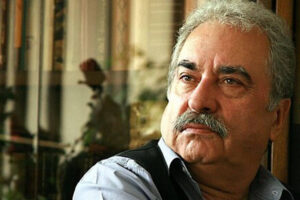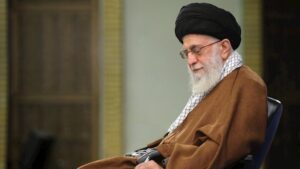A legendary figure from the southern coasts, he is revered as the “National Hero Against British Colonialism,” the “Crown of the Coast,” and most significantly, as a “Symbol of Religious Chivalry (Gheyrat-e Dini).”
His legacy is a powerful narrative of courage, faith, and unwavering principle. Numerous books, articles, and conferences have sought to unravel the essence of this celebrated icon, each adding a layer to his complex story.
Among them, Hussein Namvar’s work, Martyr Rais Ali Delvari: A Symbol of Religious Chivalry, published by Zelzeleyeha-ye Roshan, stands out not merely as a historical account but as a profound, intimate portrait from within the family sanctum, offering a perspective that is both unique and deeply personal.
The book’s greatest strength and most unique offering stem directly from the author’s privileged lineage. Hussein Namvar is the grandnephew of Rais Ali Delvari, a familial connection that fundamentally transforms the narrative from a detached, third-person historical record into a cherished family chronicle passed down through generations.
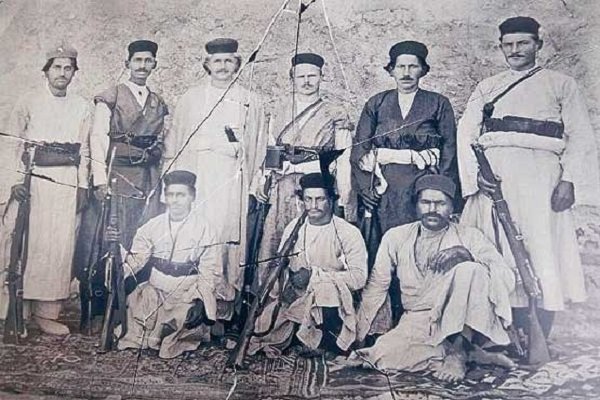
This intimate perspective lends the entire text an unparalleled authenticity and grants readers access to what is perhaps the book’s most valuable contribution: a meticulously detailed and previously undocumented genealogy of the Delvari family.
Namvar, as an insider, provides precious insights into the ancestors, tribal lineage, and the social environment that shaped the young Rais Ali, information that had remained absent from earlier publications.
This detailed familial context alone makes the book an indispensable primary resource for historians and scholars dedicated to this period, providing a clearer picture of the man behind the legend.
True to its title, Namvar’s central and compelling thesis is that the primary motivation fueling Rais Ali Delvari’s fierce anti-colonial struggle was his profound “Gheyrat-e Dini” – a complex and potent concept encompassing religious zeal, honor, dignity, and a deep-seated sense of chivalrous duty to protect faith and homeland from any desecration.
The author persuasively argues that Delvari did not see the battle against the invading British forces merely as a political or nationalistic endeavor; it was, first and foremost, a religious jihad (struggle in the path of God).
His unwavering faith, purity of Islamic belief, and innate love for his nation were the inseparable pillars of his resistance. This analysis moves beyond the tactical details of battle to illuminate the very spirit that animated the fight, framing it not as a simple skirmish but as a sacred duty against the profound injustice of colonialism.
This thematic core provides a powerful lens through which to view his actions and his ultimate sacrifice.
Furthermore, Namvar bravely tackles one of the most lingering and sensitive controversies surrounding the martyr’s death.
He explicitly challenges the long-held historical narrative that a man named Gholam Hossein Tangaki was the assassin.
The author asserts with conviction that other, shadowy actors were responsible for this treacherous act, suggesting a more complex political assassination rather than a simple personal grievance.
This claim is significant as it invites readers and historians to critically re-examine the accepted accounts of this pivotal moment and consider the more complex, perhaps hidden, forces at play within the tumultuous landscape of the time.
Who is this book for?
It is an essential read for anyone seeking a deeper, more personal understanding of Rais Ali Delvari that goes beyond the standard folklore and into the heart of his identity.
It is highly recommended for students of Iranian history, particularly those focused on the Constitutional Era and the relentless struggle against European colonialism in the Persian Gulf.
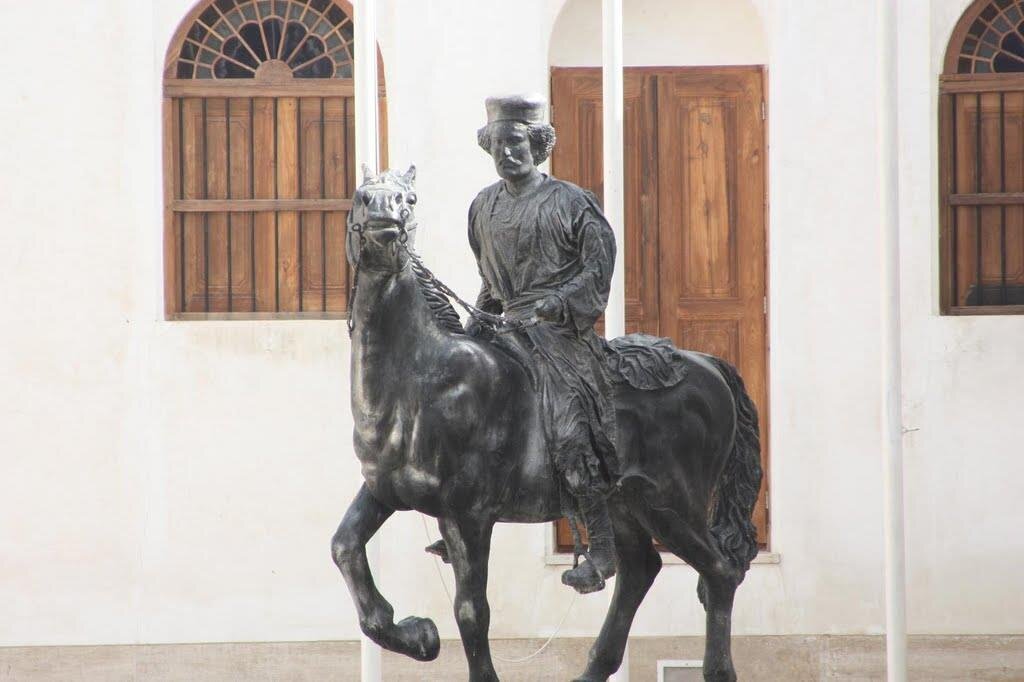
Most importantly, it serves as a powerful moral and religious text for younger generations, illustrating how deep and abiding faith can be the bedrock of courageous leadership and national resilience in the face of overwhelming odds.
The legacy of Rais Ali Delvari, as Namvar and the quoted officials emphasize, is a timeless lesson in resistance and principle.
Alongside his incredibly loyal companion, Khaloo Hossein Dashti, Delvari demonstrated that defending national sovereignty and cultural identity is the true path to development and civilization.
He proved that truly successful leadership is a powerful combination of raw battlefield courage and profound social wisdom in collective management.
His annual remembrance on the 12th of Shahrivar is not just a ritual; it is a potent annual reminder that resistance and steadfastness are a historical imperative and a guiding principle for progress, preserving national values, and shaping a collective identity rooted in strength and self-determination.
As eloquently stated by Hojatoleslam Ali Zaheddoost, the Friday Prayer Imam of Dashti, whose interview is referenced, “Rais Ali Delvari was a complete example of a Mujahid (holy warrior) who, relying on faith, sincerity, and love for his homeland, stood against colonialism and made the enemy tremble.”
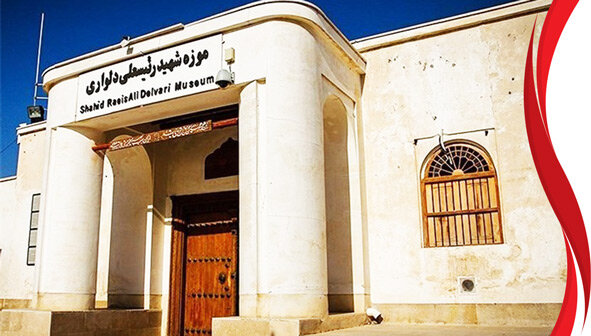
The lessons for today are clear and resonant: in the face of modern “soft wars,” economic sanctions, and cultural threats, the spirit of Delvari—characterized by awareness, insight, and unyielding resilience—is more relevant than ever.
The book concludes with a powerful and modern message: just as Rais Ali and Khaloo Hossein humiliated the colonial powers of their time, their spiritual descendants today can, with the same divinely-assisted resistance, confront and overcome the threats of modern oppressors, turning the lessons of the past into the victories of the future.
Rais-Ali Delvari, commemorated on September 3rd, stands as a symbol of resistance against colonialism in southern Iran and an enduring example of leadership, perseverance, and community strength.
As a courageous leader, Delvari successfully organized the people of Delvar against British forces, securing his place in Iranian history.
More than just a military figure, he exemplified informed and patriotic leadership in the fight for Iran’s independence.
His success arose from his deep understanding of the region’s social, geographical, and strategic landscape, coupled with the trust he cultivated among the people.
By fostering unity, he strengthened national resistance, highlighting the importance of social cohesion in the struggle.
Delvari’s impact extended beyond military action; he strengthened local civilization by promoting collective spirit and a culture of resistance.
He instilled responsibility and trust, laying the groundwork for regional development and demonstrating that resistance shapes national identity and reinforces social structures.
Annually, Bushehr Province honors Delvari’s martyrdom with ceremonies and conferences.
These events celebrate his legacy of resistance, perseverance, and sacrifice, providing a model for addressing modern challenges.
Delvari’s leadership, rooted in understanding societal realities, continues to inspire future generations in their pursuit of justice and sovereignty.
Where is Shahid Raeis Ali delvari Museum?
The house of Rais Ali Delvari is located in the southeastern part of Delvar city in the Bushehr province. This historic residence, dating back to the late Qajar era, has been gifted to the Cultural Heritage Organization by the descendants of Rais Ali Delvari and currently serves as a museum that attracts visitors.
The Museum, situated in Delvar, which is part of the Tangestan county, was once the home and living quarters of this notable figure. Delvar is the central area of the coastal sector of Tangestan and is recognized as the birthplace of Rais Ali.
Located 35 kilometers from Bushehr, the house of Rais Ali Delvari has been renovated and transformed into a cultural complex. It houses the ethnology museum of Bushehr province, along with various traditional rural activities.
Within this museum, 94 weaponry items and historical documents related to the heroic actions of the people of Bushehr province in defending their Islamic homeland and the Persian Gulf are displayed.
The museum features 23 rooms and covers an area of 3,750 square meters, boasting a history of over 110 years. It has established 17 spaces dedicated to the preservation of historical documents and artifacts.
This Museum not only serves as a monument to the legacy of a national hero but also as a repository of local history and culture, showcasing the resilience and bravery of the people in defense of their homeland.

